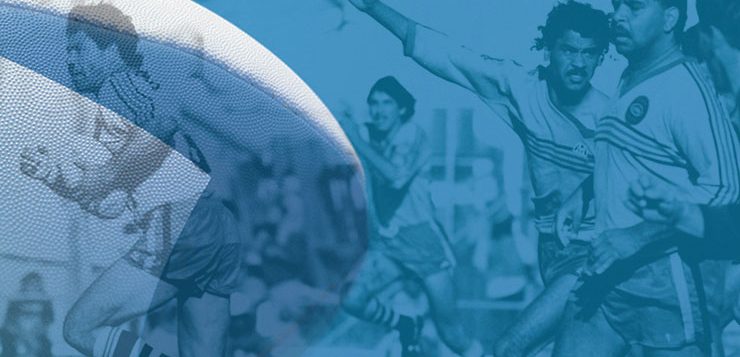An Aboriginal political activist is behind an audacious plan to turn bush football in NSW on its head. Joel Gould and Chris Graham take an in-depth look at how rugby league got to this point in the first place. *Black Vault is a new initiative from New Matilda which reprints features and special investigations published by the National Indigenous Times in the early to mid 2000s.
JANUARY 25, 2007: It’s one thing to claim that sport is the great level playing field. But it’s another thing altogether when Aboriginal people can’t get access to that playing field. Welcome to rugby league in country NSW, where Aboriginal players and clubs are being booted out of bush football faster than Cathy Freeman can run 400 metres.
In the past few months, at least three Aboriginal clubs have either been ejected from or refused entry to various Country Rugby League competitions (called Groups) in NSW. Last year, the Gimbisi Warriors were ejected from Group 2, a region which takes in the mid-north coast of NSW. While no explanation has yet been provided, alleged crowd behaviour is believed to be behind the Group decision.
Also last year, the Narwan Eels – an Aboriginal Club based in Armidale in the New England region – were kicked out of the Group 19 competition after a dispute over a debt of several thousand dollars.
Northern United, an Aboriginal team proposing to launch in 2007 in the Group 1 competition (in the Northern Rivers region of the far north coast) had their application rejected despite an existing club trying to gain permission to leave so it can join another competition on the Gold Coast.
It all got too much for Michael Anderson, one of the original founders of the Aboriginal tent embassy. He’s seen it all before.
“Even centres like Dubbo are dying. The Dubbo Macquarie club no longer fields a team. Is this because they had a team that consisted primarily of Aboriginal players?” Anderson says. “Then there is South Grafton and South Lismore on the North Coast who once had very strong clubs in the group 2 competition. They no longer exist.
“Again is it because each of these clubs were primarily Aboriginal clubs?”
So a fortnight ago, Anderson fired the first salvo in what he promises will be a war on racism in rugby league – in two-month’s time, with or without the support of the governing bodies, Anderson is planning to launch the Nations Aboriginal Rugby League, a rebel competition where white players will be embraced, but black officials will make the decisions.
Succeed or fail, rugby league in the bush will never be the same again.
A bit about the NARL
The NARL competition, Anderson says, will kick off in March this year, with 14 Aboriginal teams from around NSW.
“All up including the finals series there will be 24 rounds,” Anderson says.
“The official competition kick-off is March 24 but on February 10 we will have a triple-header trial series at Moree and there will be a big (NARL) inaugural ball held up there as well.”
There’s also plans for a series of trials to be held in Gunnedah on February 24.
When NARL sides play each other twice in the season, it will be on a home/away basis, although Anderson said that when Bourke plays a coastal club, a town will be set aside roughly at the midway point, to keep travel down to around four hours.
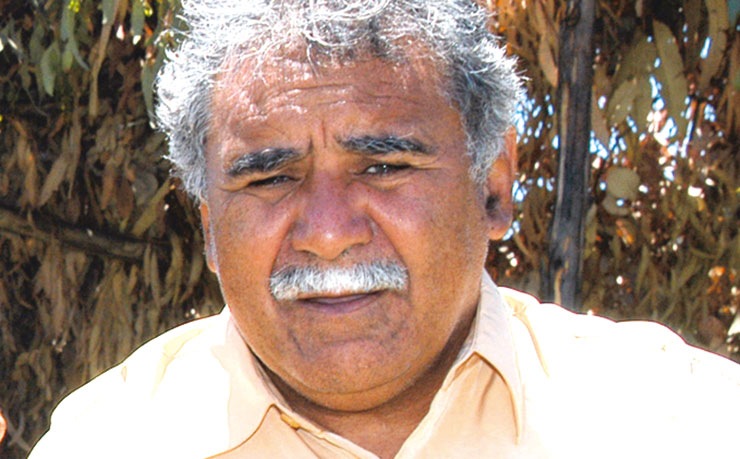
Anderson’s proposal is certainly a bold one, but more than a few people have their doubts the NARL will ever get off the ground. The sheer logistics alone are daunting.
The NARL is proposing to move 14 Aboriginal teams once a week around an area that equates to roughly half a million square kilometres. For 24 weeks.
Where the teams will play is yet to be resolved. How they’ll get there is also still pending. And who will referee them?
Then there’s the finances. The cost of a running a competition the size proposed by the NARL is not cheap. Anderson claims to have secured sponsorship of $600,000, although he won’t reveal the identity of the benefactor.
Ultimately, league lovers black and white are asking the obvious question: ‘Is a competition of this size sustainable, particularly given the lack of support for – and money available to – Aboriginal organisations?’
Anderson says it is and he’s determined to prove the critics wrong.
Either way, his announcement has already rocked rugby league, particularly in the bush.
That’s due in no small part to the fact the story broke a fortnight ago in a two-page splash in The Sunday Telegraph, the nation’s largest circulating newspaper and a leader in media coverage of the national game (the NRL).
The Sunday Tele’s story – and the NARL proposal – has shone the spotlight on country rugby league and prompted fans, media commentators and even former international players to start asking the other inevitable question: Why do Aboriginal people need their own rugby league tournament in the first place?
The answer lies with the Moree Boomerangs, the most famous Aboriginal rugby league team of them all. They’ve also been booted out of bush football, but their story is a little more complicated. And a lot longer.
Hunting Boomerangs
Things first started to go sour for the ‘Rangs during a now infamous Group 19 match in Glen Innes. It was pouring rain and some Moree club officials didn’t want the game to go ahead. It did regardless, and by half-time the ‘Rangs were trailing the Magpies. Players claimed the referee was against them. They refused to return to the field for the second half.
The Boomerangs were subsequently kicked out of Group 19.
At the time, most expected the ‘Rangs would serve a year on the sideline, or possibly two at worst. But their expulsion was in 1998.
In 2007, the Moree Boomerangs are still locked out of country football. The club has reapplied numerous times to rejoin Group 19, but each application has been rejected.
The ‘Rangs have also tried on numerous occasions to rejoin Group 4, a competition taking in Tamworth and other centres in the north west region, where the Boomerangs played in the 1980’s, before the boundaries were redrawn. They’ve been knocked back there too.
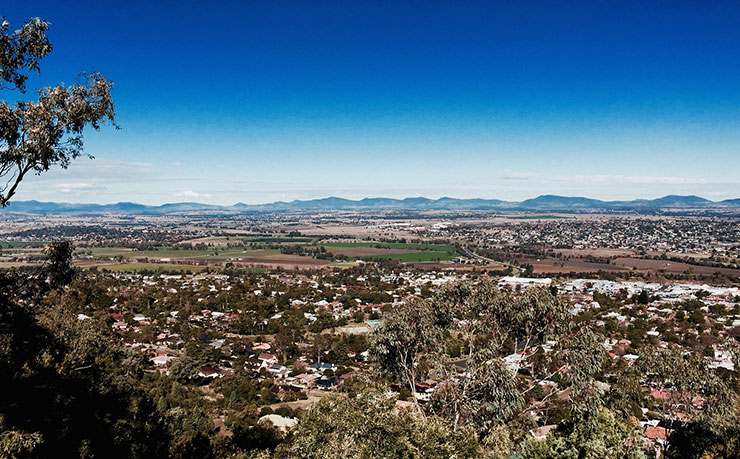
To put the region in perspective, Tamworth is the largest town in northern NSW with a population of around 50,000.
It’s most famous for being the home of the Tamworth Country Music Festival, the largest of its kind in Australia. But more recently, Tamworth earned infamy after the local council refused to take a group of Sudanese refugees as part of the federal government’s refugee resettlement program.
The story was reported around the world. It even got a run on the Arab television network Al Jazeera, due in no small part to the inflammatory remarks of the Tamworth Mayor, James Treloar and some of his fellow councillors (plus more than a few local residents).
The decision was subsequently overturned, after widespread outrage. But race remains a big issue in northern NSW and always has been. Few who have lived there (and both authors of this story have) would argue that race relations in the north west are not atrocious.
And it’s precisely the issue of race that has kept the ‘Rangs out of bush football for the past eight years, despite a court case, an appeal to a human rights body, countless interventions from senior league officials, the support of high-profile players and a few celebrities, plus innumerable media articles.
The history of the Moree Boomerangs’ attempts to get back into bush football is long and complicated. But two episodes perhaps sum it up best. In early 2001, the Boomerangs complained to the Human Rights and Equal Opportunity Commission. HREOC agreed to investigate.
Group 4 officials told HREOC that “travel costs were the sole reason behind [a]resolution (of October 10, 1998) being placed on the Group 4 books not to accept an application from the Moree Boomerangs to join our competition”.
Group 4 has consistently argued that Moree is too far for teams in the southern part of the competition to travel, particularly given there is already a Moree team in the competition (the Moree Boars, a white-run club). Having to play two Moree teams in a season would place too big a financial burden on other Group 4 clubs, officials argued.
The statement to HREOC, on the surface, seems reasonable. But dig a little deeper, and it falls apart. Firstly, delegates at the 1998 meeting of Group 4 officials said that travel costs were never raised at that meeting. Rather delegates had discussed, in light of what had occurred in Group 19, the undesirability of having an Aboriginal team in the competition.
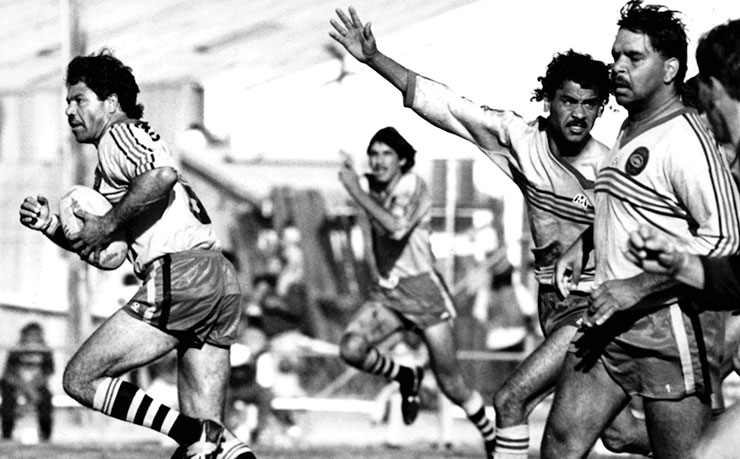
Secondly, in November 2001 (after the complaint went to HREOC) the Moree Boomerangs offered to pay for opposition teams’ travel costs to Moree. This sort of offer – which was underwritten by a multi-million dollar cotton company – is unprecedented not just in country football, but in sporting circles generally. It’s almost unthinkable that any club in any sport would pay for other teams to travel to their town. The Boomerangs did.
But it wasn’t enough to satisfy Group 4, nor was an additional offer by the Boomerangs to forfeit their right to home games and meet teams either halfway at a town closer to other clubs, or at the opposition’s home ground.
The HREOC complaint went nowhere, while the subsequent removal by the Boomerangs of all of Group 4’s stated impediments were ignored. As a last resort in 2003, the Moree Boomerangs considered nominating in the North West NSW Country Cup, a second division competition.
In a pre-emptive strike, Group 4 wrote to the North West NSW Country Cup competition advising them: “…the Group 4 executive wish to advise you that under no circumstances are the Moree Boomerangs to be admitted to your 2003 competition. Should you require any further information on this, you are requested to contact the Group President, Frank Fish….”
The letter is dated March 13, 2003, and a copy of which has been obtained by this publication.
Backed by Big Artie
Arthur Beetson is one of the most respected players ever to grace the field. He was the first Aboriginal person to captain the Australian team and remains actively involved in league today. The NARL proposal has his support.
“If they are going to deny our mob the opportunity to play rugby league then they’ve got no other option,” Beetson says. “It’s either that or go to another club but there is a lot of tradition there. You don’t turn your back on tradition.”
While Beetson is concerned at the recent rash of expulsions of Aboriginal clubs, it’s the treatment of the Boomerangs that especially frustrates him.
“I know that they (the Boomerangs) have had their problems but eight years… you don’t get that for murder these days. It says something about our leadership in this country when we deny kids the opportunity to play rugby league.
“At the end of the day it is just racism, whichever way you look at it…. Here we are 200 years down the track and they keep talking about reconciliation, but it has not happened.”
Beetson says he “didn’t get past first base” when he tried to get the ARL to accept a Maori team and an Aboriginal team in the World Cup in 2008.
“It would have been a celebration not just of 100 years of rugby league, but also of 100 years of Aboriginal involvement in rugby league.
“It would have been rugby league’s way of showing their appreciation for the Aboriginal contribution. It would have been their way to reconciliation, so-to-speak.”
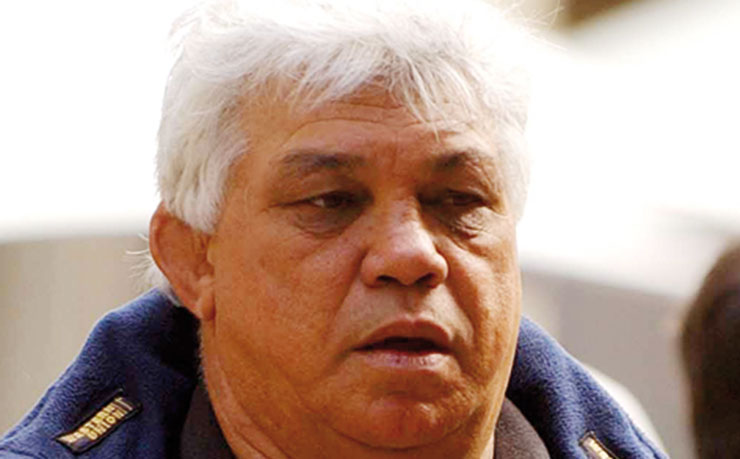
The ARL’s official reason for putting the kybosh on an Aboriginal team in the World Cup was that the tournament was only for rugby league nations. Aboriginal Australia is not a nation, the ARL says. Under the same rules, neither are the Maoris. But they were allowed to enter a team in 2000.
Even so, what most angers Beetson is the damage done to the game – while some league administrators go out of their way to keep teams like the Moree Boomerangs out of country football, the game itself is falling apart.
“A lot of the people who are on boards have no idea about how the game is dying out in some of these places because of stupid and archaic decisions that are made,” Beetson says.
“I’ve seen the game deteriorate in the bush. There are towns and clubs that don’t play rugby league anymore and that is in what were rugby league strongholds.”
In the past few weeks, Group 17 – which takes in far west towns like Hay – has folded.
Group 19, from where the ‘Rangs were ejected, look like starting 2007 with five teams and there is no longer a second division competition.
There’s no weekly competition in the far north west of the state around Walgett, and there hasn’t been for years.
“If you didn’t know any better you’d swear blind that a lot of our leadership is working for the other codes,” says Beetson. “If you didn’t know better you’d have to say that they were getting paid by rugby union, soccer and Aussie rules.”
If they are, it’s working. The statistics don’t lie, and they’re alarming.
Some Inconvenient Truths
Every year, the Australian Sports Commission (ASC) conducts an annual participation rate study of most sports in Australia, called the Exercise, Recreation and Sport Survey (the ERASS report).
The ASC found that in 2005, the national participation rate for rugby league for players aged 15 and over was just 1.2 percent. That equates to about 196,000 players.
To give you some perspective, the participation rate for horseriding/equestrian/polocrosse is also 1.2 percent. Orienteering, badminton and table tennis lag only marginally behind league.
More people participate in “ice/snow sports” (1.4 percent) than in league, despite the fact only Victoria and NSW have snowfields. Yoga attracts almost three times the number of participants.
The figures are disastrous for rugby league, but they’re actually even worse than they look. Of the 196,000 people who participated in league in 2005, 35 percent of them took no part in an organised competition (in club football, outside of schools).
That left just 128,000 adult rugby league players nationally (although the ARL today claims that figure is closer to 150,000). Organised aquarobics activities trailed rugby league by just 9,000 participants. And there were more adults playing organised volleyball (145,000) than rugby league.
At the youth level, the game appears to be no healthier.
In 2005, the Australian Bureau of Statistics released the results of a survey that compared sport participation rates from 2000 to 2003. Australian children involved in organised sport outside of school hours increased by more than 62,000, a rise of two percent. But for the same period, rugby league saw not just a decline in its participation rate, but the largest decline of any of the 12 major organised sports in Australia (swimming, soccer, netball, tennis, basketball, AFL, cricket, martial arts, athletics, gymnastics and trampolining, rugby league and hockey).
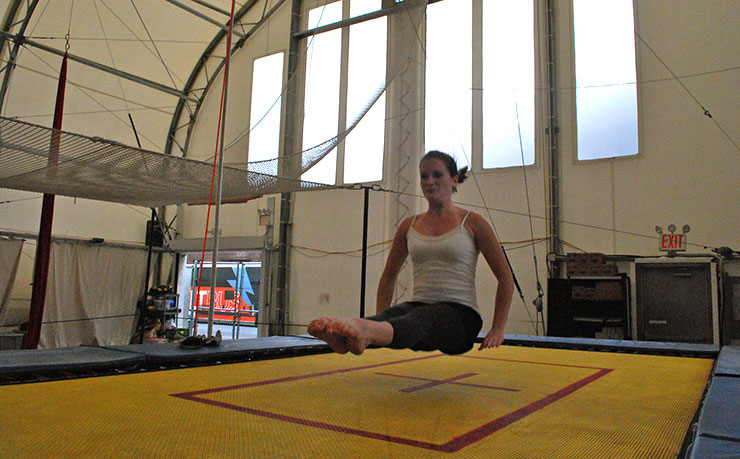
The ABS reported that around 18,000 fewer children participated in rugby league in 2003 compared to 2000, taking the total national participation rate to just 77,000 registered child players.
Gymnastics and trampolining, by comparison, boasted 92,400. Martial arts (130,000), and basketball (205,000) leave league for dead. And as for soccer – long considered the poor cousin of Australian football codes – it attracted 356,000 child players in 2003. That’s almost five times the number of young league players.
You might think those sorts of disastrous figures would cause rugby league officials to rush to sign up any player with a pulse. And you might also think, based on reports by The Sunday Telegraph that up to half of the registered country NSW league players are Aboriginal, that the Boomerangs’ would be on top of the ‘issues to be resolved’ list among league officials.
You’d be wrong.
Shooting Fish over a barrel
The Boomerangs debacle is now dragging into its ninth season and shows no signs of abating. Group 4 president Frank Fish probably best articulated the level of enmity between Group officials and the Boomerangs when he infamously claimed in 2001 that he’d ‘sooner trust a black snake than a Moree Boomerang’. But to describe the issue as ‘at an impasse’ doesn’t quite do it justice.
What the Boomerangs saga actually represents is perhaps the greatest – and longest – example of buck passing in the history of Australian sport. While it’s almost impossible to find anyone within the hierarchy of rugby league who doesn’t think the Moree Boomerangs have been treated very badly, that doesn’t mean they’ll be playing football again in a CRL competition any time soon.
CEO of the ARL, Geoff Carr: “On [the Boomerangs’]application to come back in, I thought they had done a reasonable job. But as long as the group don’t want them in it is their call. Personally I wish they were back in. It would be great for me if the Boomerangs were back in because it would take a lot of this political business away.”
Some might suggest it would be great for the Boomerangs as well, not to mention the youth of Moree. General manager of Country Rugby League, Terry Quinn also has some sympathy for the Boomerangs.
“I think they should be playing rugby league. I’ve made no secret of that,” Quinn says. “It is something we’ve probably got to address with Group 4 or Group 19 to see if we can get them playing again.
“I believe Narwan should be playing as well. They weren’t accepted (in Group 19) and that surprises me. They had a very good year last year and they’ve been in plenty of grand finals in recent years.”
Quinn said Narwan’s application was “probably something they (Group 19) should revisit, hopefully.”
And that quote – “probably… hopefully” best sums up the ARL’s and CRL’s handling of the issue – there is a lack of genuine will to get the Boomerangs back into football. It’s exacerbated by claims from people in a position to do so – like Quinn and Carr – that their hands are tied.
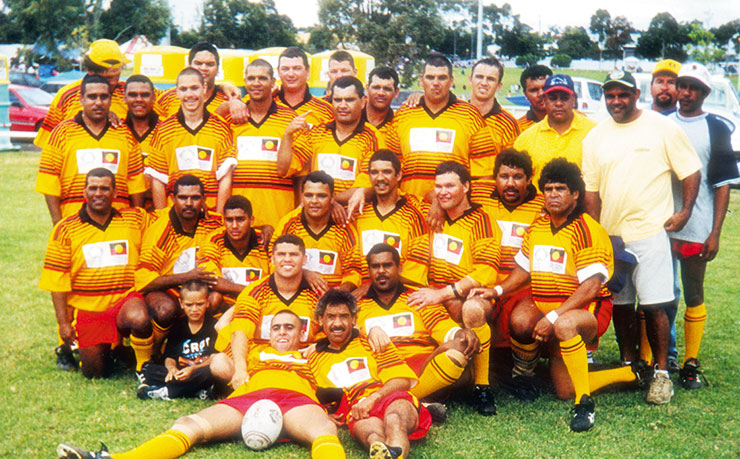
In 1999, the Boomerangs took Group 19 to the NSW Supreme Court. The ‘Rangs lost, badly. The court found that Groups had the right to determine who could play in their competition, free from pressure above from the CRL.
“Unfortunately the (NSW Supreme) court case has taken away the power from us of being able to put them in a competition,” says Quinn. “That is the sticking point.”
Carr adds: “Whether they are right or wrong is not for me to decide because I can’t do a thing about it.”
Translation: The Australian Rugby League and the Country Rugby League claim to have absolutely no control or influence over their officials at a group level. It’s a claim that doesn’t wash with Beetson.
“If the ARL, which is the governing body, is telling you that they don’t have any control then Geoff Carr should go and get a job somewhere else,” he said.
There’s no suggestion that Quinn and Carr represent the racist elements of rugby league administration. Both have advocated on behalf of the Boomerangs. But you can’t help but get the feeling the NARL proposal – not to mention The Sunday Telegraph article – might have helped focus a few minds, and shift a few priorities.
Even so, if the ARL and the CRL find they still can’t do anything to get teams like the Boomerangs, the Narwan Eels and the Gambisi Warriors back into country football, will they support a concept like the NARL?
Surely it would help breathe new life into a game that has struggled for relevance since the Super League wars of the mid 1990s. Sadly, not in a month of Sundays.
In a media statement released last week, the ARL flatly rejected any notion of support for the NARL, and then neatly hand-passed the problem to the CRL.
“The Australian and NSW Rugby Leagues have today formally notified the NSW Aboriginal Rugby League (sic) they would not affiliate with a proposed NARL competition incorporating teams across northern NSW. Chief Executive of the Australian Rugby League and General Manager of the NSW Rugby League, Mr Geoff Carr, said today: “Anybody wishing to discuss any competition should do so with the appropriate governing body, which in this case is the Country Rugby League,” Carr said.
The CRL seems no more impressed.
“At this stage I’d have to say no,” Quinn said. “It is very much up in the air. A lot of the questions we asked they couldn’t answer. There is a lot of talk but nothing concrete. I’d really have to say no to the structure of the competition that they have proposed.”
No meeting of minds
Quinn, Anderson and other NARL delegates met at Gosford Leagues Club last week with more talks scheduled for early February. They’re likely to go nowhere, just like the HREOC complaint; and just like the Boomerang’s numerous applications to play football.
So rather than support the NARL, the ARL and CRL want to create a new competition for the Boomerangs west of Moree.
The proposed Barwon-Darling competition would see the Boomerangs grouped with other Aboriginal teams from towns like Walgett and Brewarrina. Quinn said that a state-wide Aboriginal competition wouldn’t work, but one out west might.
“That’s what I want to talk to Michael [Anderson] about… if he’d put his energies into the Barwon-Darling area and we could get them under a structure where they run a weekly comp and have solid management within their clubs, then we would be very supportive of it.
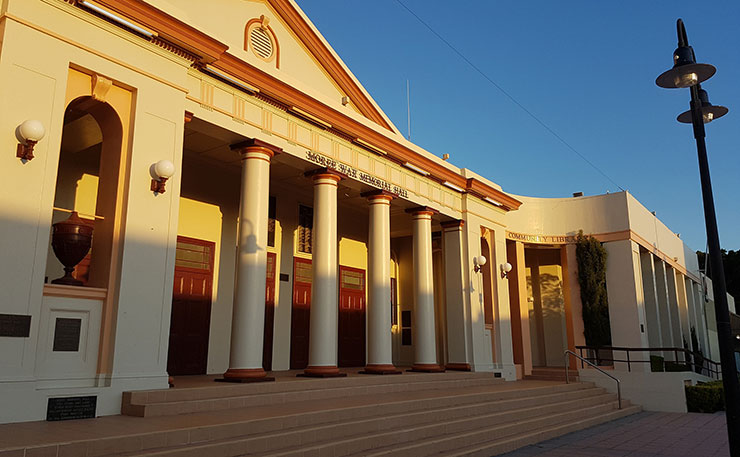
“They’d probably end up with six or eight teams and maybe the Moree Boomerangs could go across and play in that.”
Carr also backs the plan: “If there is a niche out there for a competition like this that is endorsed by the CRL then we will certainly endorse it.”
The truth is, it’s not going to happen. One of the problems with the idea of forcing the Boomerangs out west is that it’s not new. The ARL and CRL first floated it back in 2001. At the time, the move was branded a form of “apartheid” by journalist Ray Martin, one of the celebrity supporters of the Moree Boomerangs. And the idea is winning no more favour today. Michael Anderson stomped on the proposal the minute it surfaced.
“[The ARL AND CRL] have got no chance. They’re three years too late,” Anderson said.
“It just shows the level of contempt that they have for Aboriginal people. That is a knee jerk reaction because they can’t handle the fact that a group of Aboriginal people are taking them on.”
The Boomerangs won’t wear it either – club president Colin Wells said the CRL had done nothing to get a viable competition up and running.
“It is comments like that by Terry Quinn that should make it clear to everyone why we are so keen to play in this NARL competition,” Wells said.
Boomerangs club stalwart Lloyd Munro wasn’t impressed either, labelling the lack of support for an Aboriginal competition from the game’s hierarchy as “a joke, but typical”.
On their own
So now, 14 Aboriginal clubs are planning to ‘do it for themselves’. As this story goes to press, Anderson is touring the state talking to the various clubs, chasing more sponsors, organising referees and looking for appropriate grounds to play the games.
“We have made it very clear to [the ARL and CRL]that nothing will stop this competition from going ahead,” he says.
And so far, it’s getting support from Aboriginal clubs ranging from ‘cautious’ to ‘enthusiastic’. President of the Gimbisi Warriors, Fred Quinlan said the NARL competition “will work” but also said his preferred option was for the ARL and CRL to sanction it. He added that it was his hope that all the bodies could “work together”.
“We don’t want this competition to fall over. We want to work with the ARL, CRL and NRL, not against them,” he said.
Quinlan noted that whatever happened, his club was open to all races and all cultures. “It is a side with whites and blacks. It has got all nationalities in it and is multicultural.”
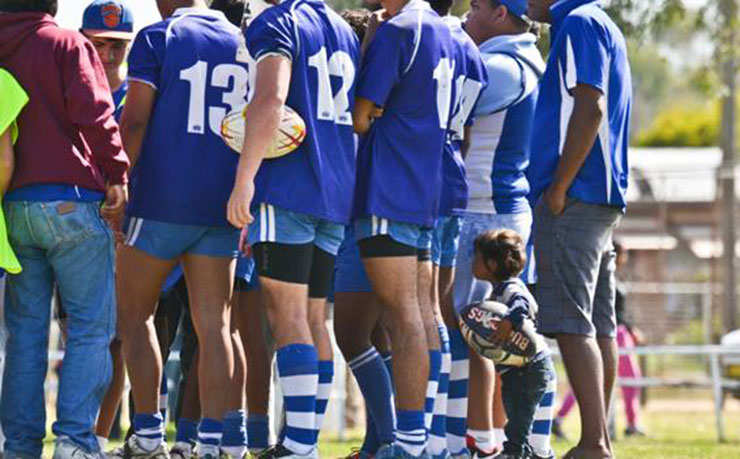
The Narwan Eels are also looking seriously at the NARL and were due to meet with Anderson this week. For Moree’s part, they’ve already started training. Colin Wells said quotes have been organised for new goalposts. Lloyd Munro said there was a buzz around Moree at the prospect of the Boomerangs ‘finally coming back’.
“The players are excited because they are going to be playing football again for their own clubs and under the banner of their own community,” Munro says. “They are training and doing things that they haven’t done for years.
“We are trying to get our communities going through rugby league. People need to realise that.
“When we don’t have a football team everything suffers when it comes to social issues like unemployment, drug and alcohol abuse.
“But rugby league is all about discipline. They know where they are going to be Tuesday, Thursday and Friday nights for training. They know that they are going to be playing football on Saturday afternoon.
“Discipline can lead to employment and other opportunities down the track. That is what rugby league can do.”
* An update
A version of this special investigation was first published in the National Indigenous Times newspaper on January 25, 2007.
The competition – named the Aboriginal Nations Super League – was launched by Anderson in 2007, after the ARL and CRL tried unsuccessfully to stop it, then pretended to publicly support it. The competition lasted two seasons, before ending, but it had the desired effect, sparking momentum that has led to substantial progress in race relations in the game of rugby league.
The Moree Boomerangs were allowed to re-enter country football, and also in 2008, the ARL finally allowed an all-Aboriginal team at the World Cup, sort of. An Indigenous Dreamtime team played an exhibition match against the New Zealand Maori. An all-Aboriginal team in the world cup is still a work in progress.
In 2010, the National Rugby League also introduced an Indigenous All-Star game to the annual calendar, with Aboriginal and Torres Strait Islander players now taking on a non-Indigenous team every year. It’s one of the biggest events on the NRL calendar.
Donate To New Matilda
New Matilda is a small, independent media outlet. We survive through reader contributions, and never losing a lawsuit. If you got something from this article, giving something back helps us to continue speaking truth to power. Every little bit counts.

